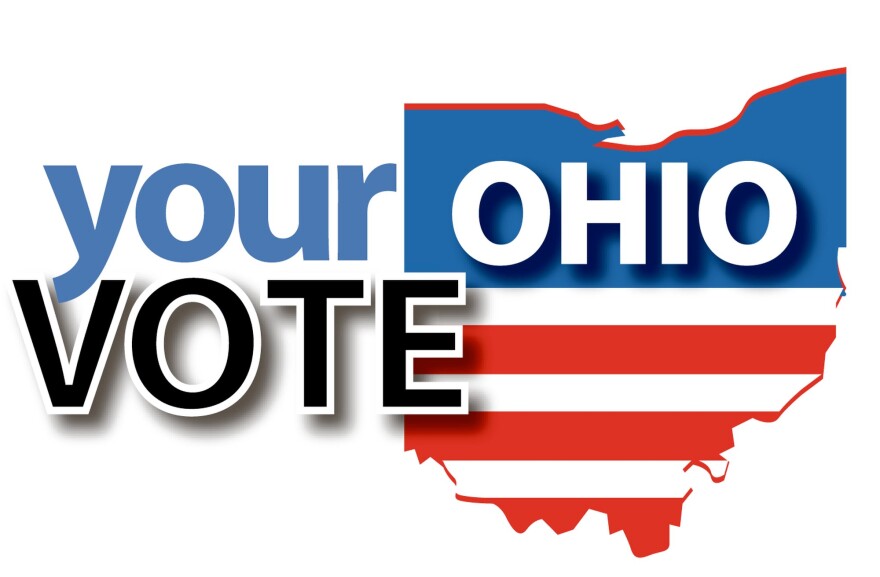Frustrated and confused, Kathy Moore shook her head as the slow piano and scratchy images faded.
“Terrible,” she said of the latest political ads attacking Hillary Clinton and Donald Trump.
Moore, 49, of Akron, learned nothing from the illegal immigrants and Syrian refugees shown flooding into America as Clinton, in unrelated and doctored photos, smiled. Nor did Moore find useful a compilation of Trump’s more vulgar remarks, recorded at rallies and mixed with ominous shots of a storm brewing over the White House.
Moore quit her warehouse job recently after 18 years to start a cleaning business. The ads tell her nothing of how the candidates will help her small business, or improve education for her nine grandchildren, or ensure the Social Security payments she’s made will be available when she retires.
https://www.youtube.com/watch?v=4obk0P2YCFg
If anything, the ads made her more cynical about the election and the candidate. She, and many others in battleground Ohio, have a sense that the smear tactics are affecting their faith in the nation’s leaders, and inevitably, democracy.
The Wesleyan Media Project estimates that Ohioans have seen more than $35 million in U.S. Senate ads and $14 million in presidential ads halfway through the general election. Because of Ohio’s importance in the national balance of power between Democrats and Republicans, the $50 million political ad blitz has been especially negative.
https://www.youtube.com/watch?v=LsZqb-OY14U
Every presidential ad placed this past month — mostly commercials portraying Trump as bigoted and racist — has been negative, according to research by the University of Akron’s Ray C. Bliss Institute of Applied Politics.
In the Senate race, the research suggest 60 percent or more of ads are negative, mostly produced by outside groups that are driving 90 percent of direct messaging to voters.
A crude calculation, based on the UA research and the total ad spending, suggests that $35 million in negative campaigning has followed Ohioans around on their cell phones, TV sets, computers and car radios.
That’s $35 million to make Ohioans lose faith in national leadership.
Please, no more
Ohioans really don’t like the mudslinging, questionable claims and character assaults.
In a Bliss Institute poll of 1,089 Ohioans, 80 percent said negative campaigning bothers them, and 76 percent said it is damaging democracy.
Nearly three in four respondents said negative campaigning discourages voting and a whopping nine in 10 figure it’s more likely to manipulate emotion than provide useful information.
“It works,” because people remember them better than positive ads, politicians usually say when asked for the reasons they do it.

Negativity in moderation in fact can be useful, said Travis Ridout, co-director of the Wesleyan Media Project. “It helps voters draw a contrast between candidates.”

“[But] for other people,” he cautioned, “it can be demobilizing.”
Unfortunately, there’s no moderation in Ohio.
Since the Wesleyan Media Project began tracking the tone and intensity of political campaigns in 2010, campaigning has become increasingly negative. That’s partly because of an influx of attack ads by outside groups.
These non-candidate groups — funded by organized labor and, more so, billionaires and corporate interests — have exploded since their right to free speech was affirmed in 2008 by the U.S. Supreme Court in the controversial Citizens United case.
Today, they pump tens of millions of dollars into state and federal races to persuade voters that good candidates might be bad people.
On the attack in Ohio
Florida and Ohio jockey for first and second place in total ads aired, but Ohio has seen more outside group activity than any state.
The Cleveland media market, which includes Akron and Canton, ranks third in the nation for total presidential ads aired (Columbus is seventh), according to the Wesleyan Media Project. Since Trump bought his first general election ad Aug. 19, media markets in Cleveland, Columbus, Toledo and Dayton have made the top 10 list nationally for the number of presidential ads aired.
So, if voters can’t find enough character flaws in Trump or Clinton, the advertisers are there to help them out, hourly.
The onslaught of ever-intensifying and negative ads have turned voters into cynics.
“I think it discourages people from going out to vote,” said Angela Hawsman, a retired police and fire dispatcher from Cuyahoga Falls. Like most voters, she see little value in the attacks, other than disillusionment.
“I’m almost questioning voting,” said Walter Powers, a 42-year-old father and college student from West Akron.
Worst to come
The frequency of political ads, based on historical spending levels, will ratchet up as candidates tear each other down in the precious months before Nov. 8.
And in Ohio, there’s also the Senate race, and if the U.S. Senate tips towards Democrats by four, the balance of power shifts in Congress. Big spenders all over the country are attempting to destabilize the Buckeye electorate.
“The closer it gets to the presidential [election], the dirtier the ads get, the more incompetent the one tries to make the other one,” said Powers. “It’s just one commercial after another. The closer to November it gets, the worse it is.”
The outside spending has forced candidates to fire back or break fundraising records so their accomplishments might be heard above the demoralizing attack ads.
“You’re kind of in a vicious cycle of attack, attack, attack, which makes it even more negative,” said Ridout, whose college courses cover the use of media in political campaigns.
Top-dollar Senate race
Ohio’s tight Senate race between incumbent Republican Sen. Rob Portman and Democrat Ted Strickland, a former governor, isn’t helping.
A race Democrats plan to win on the way to regaining a majority in Senate, it’s attracted more outside spending than any federal election, other than the presidential race.

Strickland has decried outside interests hellbent on tarnishing his reputation and distorting his record. “Attack ads are easy. Leading in a crisis is hard,” he said in a commercial responding to an outside group’s attack.
Thirty-four Senate seats are up for election this year, but Strickland alone has been the victim of $18 million in outside attacks, compared to $23 million against all other Democrats, according to The Center for Responsive Politics.
Portman, currently touring the state in an RV to get out his record of bipartisan accomplishments, has raised more money than any congressional candidate to counter negative attack ads by Democrats.
All told, outside groups have bought $33.3 million in messaging, leaving Ohio heads spinning with nasty, not entirely accurate television and internet plugs.
Attacks against Strickland are led by Kock-brothers backed Freedom Partners Action Fund and Americans for Prosperity. Outside spending against Portman can almost entirely be traced to the Senate Majority PAC, led by Congressional Democrats.
Republicans up in Ohio
Across the nation, Democrats dominate the ad wars in nearly every battleground Senate race, the Wesleyan Media Project found.
But not here.
In Ohio, due to Portman’s proficient fundraising and generous support from outside groups, Republicans have outspent Democrats.
Strickland is the recipient of 43 percent of all outside group attacks against Democrats running for Senate. By comparison, Portman has attracted 29 percent of outside attacks against Republicans.
Multiple UA interns under the direction of Bliss Institute director John Green, who also led the Ohio poll, found that all nine ads produced by Portman in the past month have been positive. Strickland’s are a mix of two positive and three negative.
Every outside group ad, however, has been negative, including nine attacking Strickland and five attacking Portman.
Ohio’s Senate race has featured 46,866 ad airings — 21,784 more than second place Pennsylvania.





